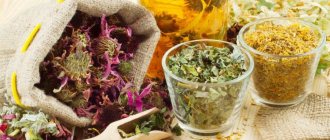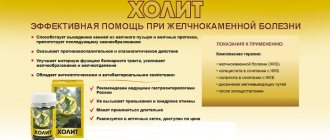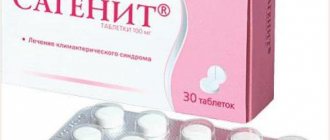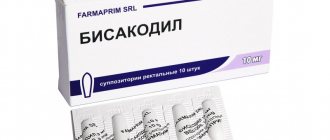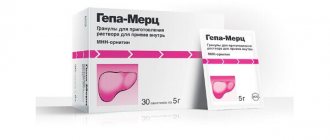Pharmacological action of Camphor
Camphor is a herbal medicine and, according to the instructions, has anti-inflammatory, local irritant, antimicrobial, distracting and analgesic effects when used externally. Promotes stimulation of nerve endings localized in the skin, improves tissue nutrition and locally increases the tone of blood vessels. When administered subcutaneously, the effect of Camphor is manifested in reflex excitation of the respiratory and stimulation of the vasomotor center, as well as analeptic activity. The drug has the ability to directly affect the myocardium, activate metabolic processes in the heart muscle and its susceptibility to the influence of sympathetic impulses from the peripheral nervous system. The use of Camphor leads to an increase in blood flow to the heart, improved blood circulation in the brain and lungs, as well as softening and removal of sputum when the drug is released through the respiratory tract.
Camphor is a recognized medicine and aromatherapy agent.
This is my article.
Source: Collection No. 1 of the Institute of Aromatherapy // Institute of Aromatherapy. // Ed. Sakova I.V. - St. Petersburg: LLC Publishing House "LEMA", 2015.
Plants containing camphor have been used since ancient times. There is a lot of camphor in basil, rosemary, wormwood, camphor laurel, and fir. It is also found in many other fragrant plants.
Moreover, the scope of use of camphor is not limited to medicine and aromatherapy. For example, both camphor-containing plants and pure camphor are an effective means of combating moths. Camphor is used in cooking. And starting from the 20th century. it is actively used in the production of certain plastics, types of gunpowder and even chemical barometers.
Camphor is a bicyclic terpene.
One of the physical properties of camphor is optical rotation. Accordingly, dextrorotatory, levorotatory camphor and racemate (a mixture of dextrorotatory and levorotatory) camphor are distinguished.
Dextrorotatory natural camphor is extracted from the camphor tree Cinnamonium camphora.
Chemical composition of whole camphor essential oil: 1,8 cineole, camphor, monoterpene hydrocarbons, safrole, alpha-terpineol, camphor, sesquiterpene hydrocarbons.
Synthetic levorotatory camphor is obtained from Siberian fir or Scots pine. The semi-synthesis of camphor racemate is based on pinene, which is found in large quantities in turpentine, extracted from Pinus sylvestris.
The main amount of camphor is found in wood.
In China and Japan, camphor is obtained by steam distilling wood shavings. The yield of camphor after separating it from the liquid part of the oil can reach 2-3%.
On the Black Sea coast, camphor laurel is used as a source of camphor. The raw material for distillation is young shoots, cut from the tree twice a year: in June-August and October-February. Yellowed leaves are richest in camphor.
Camphor is isolated from the resulting essential oil by freezing, after which it is purified by sublimation.
Other plants (camphor basil, camphor wormwood, etc.) have been studied as possible sources of camphor. But until now, obtaining camphor from fir oil remains the most cost-effective method. In particular, a chemical analysis of the Siberian fir foot from Evenkia was analyzed and a high content of camphor in the essential oil was found - 4.4%.
Synthetic racemic camphor, obtained from turpentine, is allowed only for external use. Dextrorotatory natural camphor is used both internally and externally.
In production, a medicinal form of camphor is obtained - a 20% solution of camphor in oil for injection. The composition of this injection oil solution: 200 g of camphor and peach oil up to 1 liter. It is an oily, transparent liquid of light yellow color with the smell of camphor.
For medicinal purposes, crystalline camphor is used in the form of white crystalline pieces or colorless crystalline powder, or pressed tiles with a crystalline structure. Hard camphor is easily cut with a knife and sticks together into lumps.
Camphor has a strong characteristic odor and a spicy, bitter, cooling taste.
It easily turns into powder in the presence of a small amount of alcohol and chloroform. When triturated with phenol, menthol, thymol or chloral hydrate, it forms thick transparent liquids (eutectic mixtures).
The melting point of camphor is 174-180 °C. The melting point of the racemate (a mixture of dextrorotatory and levorotatory camphor) is 171-178 °C. But it easily sublimates at room temperature, forming crystalline sublimation in the upper parts of the vessel in which it is stored. Therefore, camphor is stored in a separate cabinet, in tightly closed jars, in a cool place. 20% oil solution of camphor for injection is stored in a place protected from light.
When heated gently, the camphor evaporates without charring.
Camphor is slightly soluble in water, easily soluble in 95% alcohol, petroleum ether, fatty and essential oils. Very easily soluble in ether and chloroform.
In official medicine, camphor is used as a stimulant of the central nervous system, a cardiotonic agent for infectious and other diseases accompanied by acute cardiovascular failure, as well as for shock conditions in case of respiratory depression due to pneumonia, in case of poisoning with sleeping pills and narcotic substances. Used as a sterile 20% oil solution.
When injected under the skin, solutions of camphor in oil reflexively stimulate the respiratory and vasomotor centers. It also has a direct effect on the heart muscle, enhancing metabolic processes in it and increasing its sensitivity to the influence of “sympathetic nerves”. Under the influence of camphor, peripheral blood vessels narrow.
Excreted from the body through the respiratory tract, it promotes the separation of sputum.
There are indications that camphor inhibits platelet aggregation, and therefore it can be recommended to improve blood microcirculation.
Camphor is combined with bromides (bromocamphor), tincture of valerian (camphor-valerian drops) to enhance the sedative effect.
Use a 10% solution of camphor in sunflower oil and 10% ointment for rubbing and compresses for muscle pain, rheumatism, arthritis, 1 and 2% camphor alcohol to prevent bedsores.
Camphor is included in some dental drops.
Preparations for external use, which include camphor:
- Camphor ointment (Unguentum Camphoratum). Ingredients: camphor 10 g, turpentine oil 20 g, purified pork fat 40 g, paraffin 10 g, petroleum jelly up to 100 g. Yellow ointment with the smell of camphor.
- Camphor alcohol (Spiritus camphoratus). Ingredients: camphor 10 g, alcohol 90% 70 ml, water up to 100 ml. Transparent colorless liquid with the smell of camphor.
- A solution of camphor and alcoholic salicylic acid (Solutio Camphorae et Acidi salicylici spirituosa). Ingredients: camphor 50 g, salicylic acid 10 g, alcohol 70% up to 1 l. Transparent colorless liquid with the smell of camphor.
- Camphocinum. Liniment. Ingredients: camphor 15 g, salicylic acid 3 g, castor oil 5 g, purified turpentine oil and methyl salicylate 10 g each, capsicum tincture up to 100 g. Transparent liquid of reddish-yellow color with a specific odor.
- Drops "Denta" (Guttae "Denta"). Ingredients: chloral hydrate and camphor 33.3 g each, alcohol 95% up to 100 ml.
- Dental drops. Ingredients: camphor 6.4 g, mint oil 3.1 g, valerian tincture up to 100 g.
When applied topically, camphor preparations have an irritating (distracting) and partly antiseptic effect.
Camphor oil is most effective for pathologies of the respiratory system, musculoskeletal system and neuropsychic sphere.
Indications for the use of camphor in aromatherapy:
- Depression, anxiety, overwork, chronic fatigue syndrome, apathy, stress and post-stress states, irritability, hysteroid reactions, insomnia, shock reactions.
- Bradycardia, myocardial dystrophy, arterial hypotension, impaired peripheral and general microcirculation.
- Acute and chronic bronchitis, cough, pneumonia, tuberculosis, influenza, ARVI, high body temperature.
- Stomach and intestinal colic, constipation, flatulence, vomiting, helminthic infestation, cholelithiasis, nausea.
- Urinary retention, urolithiasis.
- Arthritis, fibrositis, gout, osteochondrosis, muscle pain, sprained ligaments and tendons, rheumatoid arthritis, rheumatism.
- Burns, frostbite, bruises, bedsores, ulcers, poorly healing wounds, lice.
- Flaky and inflamed skin, oily skin, sweating.
- Toothache, unpleasant body odor, high body temperature.
Camphor preparations are contraindicated for epilepsy and a tendency to convulsive reactions, bronchial asthma, childhood and pregnancy.
Camphor in aromatherapy is used in low and medium dosages (maximum 10%). High dosages can have a toxic effect on the nervous system.
Camphor is a medium volatile essential oil. In mixtures it goes well with some low-volatile (patchouli, frankincense, myrrh) and medium-volatile (geranium, lavender, rosemary) essential oils.
Recipes for camphor oil mixtures for aromatherapy:
- Oil lotion: 30 drops of camphor essential oil per 100 ml of base fatty oil (olive, peach, apricot kernels, sweet almond, sunflower, etc.). Use for local massage or rubbing (chest, neck, back for respiratory pathologies, infections; joint area - for arthritis and arthrosis; back - for rheumatism; stomach and lower back - for cholelithiasis; back, chest, upper limbs - for arrhythmias ). Course of treatment: 1 procedure per day for 10-14 days (bronchitis, influenza, acute respiratory infections, ARVI, pneumonia, arthritis, arthrosis, rheumatism, arrhythmias).
- 2. Water lotion for rubbing: 4-5 drops of camphor essential oil per 500 ml of water. Use 1-5 times a day for 2-5 days as an antipyretic at elevated temperatures.
- Cold compress: 500 ml of cold water, 3-5 drops of camphor essential oil. Use at elevated temperatures, as well as for sprained and damaged ligaments.
Recipes for cosmetics with camphor:
- Sugar scrub (120 g). Ingredients: peach oil – 5 tsp; emulsifier Polawax – 2 g; camphor – 1 g; sugar – 100 g. Melt butter and emulsifier in a water bath. Add crystalline camphor to the cooling oil. Carefully move until the camphor is completely dissolved. Pour sugar into the oil solution. To stir thoroughly. Store in a glass jar in the refrigerator. Use once a week for the entire body as a gentle exfoliating, antiseptic, anti-inflammatory agent.
- Oil slabs for feet (100 g). Ingredients: cocoa butter – 80 g; shea butter – 10 g; sweet almond oil – 1 tsp; wheat germ oil – 1 tsp; camphor – 2 g. Melt the oils in a water bath. Add crystalline camphor to the cooling mixture of oils. Carefully move until the camphor is completely dissolved. Pour the oil solution into the molds. Place in the refrigerator. Wait until the oil mixture has completely hardened. Remove the finished tiles from the molds. Store in the refrigerator in a glass jar. Use daily before bed as a softening, moisturizing, deodorizing agent.
- Hydrophilic body tiles (100 g). Ingredients: shea butter – 20 g; apricot kernel oil – 15 g; cocoa butter – 40 g; emulsifier Polawax – 25 g; camphor – 2 g. Melt the oils and emulsifier in a water bath. Add crystalline camphor to the cooling mixture of oils. Carefully move until the camphor is completely dissolved. Pour the oil solution into the molds. Place in the refrigerator. Wait until the oil mixture has completely hardened. Remove the finished tiles from the molds. Store in the refrigerator in a glass jar. Use as a cleanser in the shower or bath (instead of soap) or as a moisturizer, emollient, anti-inflammatory and antiseptic after a shower or bath (instead of cream).
- Deodorant (130 g). Ingredients: baking soda – 60 g; potato starch – 30 g; cocoa butter – 15 g; shea butter – 15 g; beeswax – 7 g; camphor – 2.5 g; lavender essential oil – 15 drops; rosemary essential oil – 15 drops. Melt the oils and wax in a water bath. Add crystalline camphor to the cooling mixture of oils. Carefully move until the camphor is completely dissolved. Pour baking soda and starch into the oil solution. To stir thoroughly. Place the resulting mixture into molds. Place in the refrigerator. Wait until the mixture hardens completely. Remove the finished deodorant bars from the molds. Store in the refrigerator in a glass jar.
Camphor is widely used in both academic and traditional medicine. Moreover, its dosage forms are varied: from solid crystalline camphor to whole camphor essential oil, as well as alcohol and oil solutions, including injection ones.
The use of camphor in academic medicine is prescribed in the State Pharmacopoeia of the Russian Federation: a stimulant of the central nervous system, a cardiotonic agent for infectious and other diseases, an antishock agent in case of respiratory depression in pneumonia, in case of poisoning with hypnotics and narcotic substances. In industrial and pharmaceutical production, a large number of camphor preparations are produced: ointments, solutions, drops, powders.
Aromatherapy expands the use of camphor to a larger number of pathologies. Includes indications for gastrointestinal diseases, genitourinary diseases and skin disorders (cosmetology and dermatology).
At the same time, camphor is very convenient for home use. It easily dissolves in oil and alcohol, does not require very strict safety requirements (restrictions in use are associated with contraindications - childhood, pregnancy and some pathologies).
Therefore, taking into account the variety of indications and methods of use, as well as the ease of preparing simple camphor preparations at home, we believe that camphor can take its rightful place in the arsenal of an aromatherapist and cosmetologist.
Literature:
- Glushchenko N.N., Pletneva T.V., Popkov V.A. Pharmaceutical chemistry. – M.: Publishing House, 2004;
- State Pharmacopoeia of the Russian Federation. Twelfth edition. M.: Publishing house "Scientific Center for Expertise of Medicinal Products", 2008;
- State Pharmacopoeia of the USSR. Tenth edition. M.: Medicine, 1968;
- State Pharmacopoeia of the USSR. Eleventh edition. Issue 1. M.: Medicine, 1987;
- Kuleshova M.I., Guseva L.N., Sivitskaya O.K. Analysis of dosage forms manufactured in pharmacies. M.: Medicine, 1989;
- Mashkovsky M.D. Medicines. M.: New Wave: Publisher Umerenkov, 2010;
- Melentyeva G.A., Antonova L.A. Pharmaceutical chemistry. M.: Medicine, 1993;
- Muravyova D.A., Samylina I.A., Yakovlev G.P. Pharmacognosy: textbook. M.: Medicine, 2007;
- Peli F.F. Aromatology. M.: Medicine, 2001;
- Sakov I.V. Aromapsychology. Rostov-on-Don: Phoenix, 2006;
- Pharmaceutical chemistry: textbook. manual / ed. A.P. Arzamastseva. M.: GEOTAR-Media, 2008.
Indications for use of Camphor
External use of Camphor is recommended for:
- Sciatica;
- Myositis;
- Arthritis;
- Myalgia;
- Radiculitis;
- Arthralgia;
- Rheumatism;
- Prevention of bedsores.
Camphor oil is used for sleep disorders, loss of strength, depression, shock, as well as for infectious lesions of the dermis, burns, frostbite and inhalations in the treatment of diseases of the upper respiratory system. Subcutaneous administration of the drug is prescribed as part of complex therapy for:
- Chronic and acute heart failure;
- Hypotension;
- Infectious lesions of the respiratory center (including pneumonia, purulent pleurisy, etc.);
- Collapse (sharp decrease in pressure);
- Poisoning with sleeping pills, drugs, analgesics.
The use of Camphor rubini is indicated for food intoxication, characterized by loss of strength and low pulse rate, for dysentery, collapse, ARVI, cholera, urological diseases, pain in the occipital region. The product is also used as an antidote for various drugs used in homeopathy.
Use of camphor oil in medicine
In medicine, camphor oil is used to improve conditions and treat in a variety of ways.
The most common are compresses used to treat various skin inflammations, wounds and burns.
Camphor oil is also effective for ear diseases such as otitis; the oil must be dripped into the sore ear.
For acute respiratory diseases, massage and rubbing with camphor oil is necessary; it will significantly alleviate the condition of rheumatism, pain in muscles and joints.
For respiratory diseases, colds, runny nose and cough, use camphor oil in the form of inhalation.
Camphor oil is also used in aromatherapy to treat insomnia and nervous disorders.
It is also important to take into account that camphor oil for bedsores should be used only for preventive purposes; applying camphor oil to already formed wounds is strictly prohibited.
Directions for use and dosage
For subcutaneous administration of the drug, it must be slightly warmed up (to body temperature), the dosage for adults of a 20% oil solution, according to the instructions, is 1-5 ml, 1-3 times a day, for children 10-14 years old - 2.5 ml, 7 -9 years – 2 ml, 3-6 years – 1.5 ml, from 1 to 2 years – 1 ml, up to one year – 0.5-1 ml. When using Camphor externally, the product is applied to the skin over painful areas no more than 3 times a day, usually therapy lasts 1-1.5 weeks. When massaging with Camphor oil, to relieve pain from rheumatic lesions, colds, and nervous disorders, use 4-5 drops of the drug mixed with other massage oils. When conducting aromatherapy sessions to relieve fatigue, increase concentration, and stress, use 2-3 drops of oil heated in an aroma lamp. Rubini camphor is recommended to be used for diarrhea, colic, collapse, diluted in a spoon of water or on a piece of sugar, one drop, every 15 minutes for half an hour.
special instructions
When using Camphor, several mandatory factors must be taken into account:
- if there are wounds on the skin and abrasions, you should consult a doctor before using the drug, since contact with an open wound can cause severe inflammation and irritation;
- in childhood, Camphor causes side symptoms several times more often, which is due to the special sensitivity of their body;
- the drug does not affect the ability to drive vehicles and complex mechanisms, except in cases where the active substance provoked headaches, dizziness and delirium.
Video: “Use of camphor alcohol”
Where is it used?
The drug is effective in the treatment of infectious diseases. It is good to take it for pneumonia and depressed breathing. In case of poisoning with sleeping pills or overdose of narcotic drugs, camphor is prescribed. Apart from its internal use, the oil is mostly used against burns, cuts and pustules on the skin.
In addition to its beneficial properties, camphor is used in aromatherapy. It has a refreshing scent that helps normalize sleep, calms you down and relieves depression.
Release form
On pharmacy shelves you can see an ointment that contains not only camphor, but also solid paraffins, distilled water, petroleum jelly and salicylic acid.
Capsules are created from camphor powder and gelatin. The alcohol solution itself already says a lot. It contains medical alcohol, purified water and camphor. It was written above that it is excellent for rubbing.
What's happened?
This tree species grows in Japan and China, as well as Taiwan. Cultivated plants are easy to find in America, Africa and the Caucasus. Camphor is an evergreen tree. If you pay attention to the height, the plant reaches about fifty meters. The crown itself is spreading and gnarled; deep vertical furrows can be observed on the bark. The leaves are almost waxy and wide. Very often essential oils appear on their surface. In bloom are paniculate inflorescences with yellow-green small flowers. The fruits ripen closer to November. If we look at and compare the berries, they are somewhat similar to blackberries and have a purple-black color.
Homeopaths value more the old pure trees that grow in forests. It is these types that most contain useful components, of which there are many in the lower part. To obtain oil, trees are ground to dust, then in special tanks, the substance is distilled with water vapor. The result is natural camphor, which can also be crystallized. Crystals are also used in various healing remedies.
Reviews about the use of Camphor
Today, the drug is more often used in cosmetology , as more modern and powerful drugs have appeared for the treatment of heart and respiratory dysfunction. Camphor is also often prescribed to treat low blood pressure and apathy.
With this use, patients note a real stimulating effect, more often it is short-term in nature and requires the complex use of other medications.
When administered subcutaneously for the treatment of heart failure, breathing problems and intoxications, positive dynamics were achieved only with a combined course of therapy.
As a separate means to stabilize the patient's condition, Camphor helped only in emergency cases, after which the prescription of stronger medications was required.
Of the side effects, patients most often complained of itching and swelling at the injection site. Sometimes headaches and dizziness were noted.
Disorders such as convulsions, delirium, and live embolism are exceptional and do not have a high risk of occurrence.
Attention! If you have experience using any form of Camphor externally or internally, please share your opinion on the treatment in the comments. Report side effects. How vividly the symptoms manifested themselves, how quickly they stopped. This information is required to correctly design a course of treatment.
